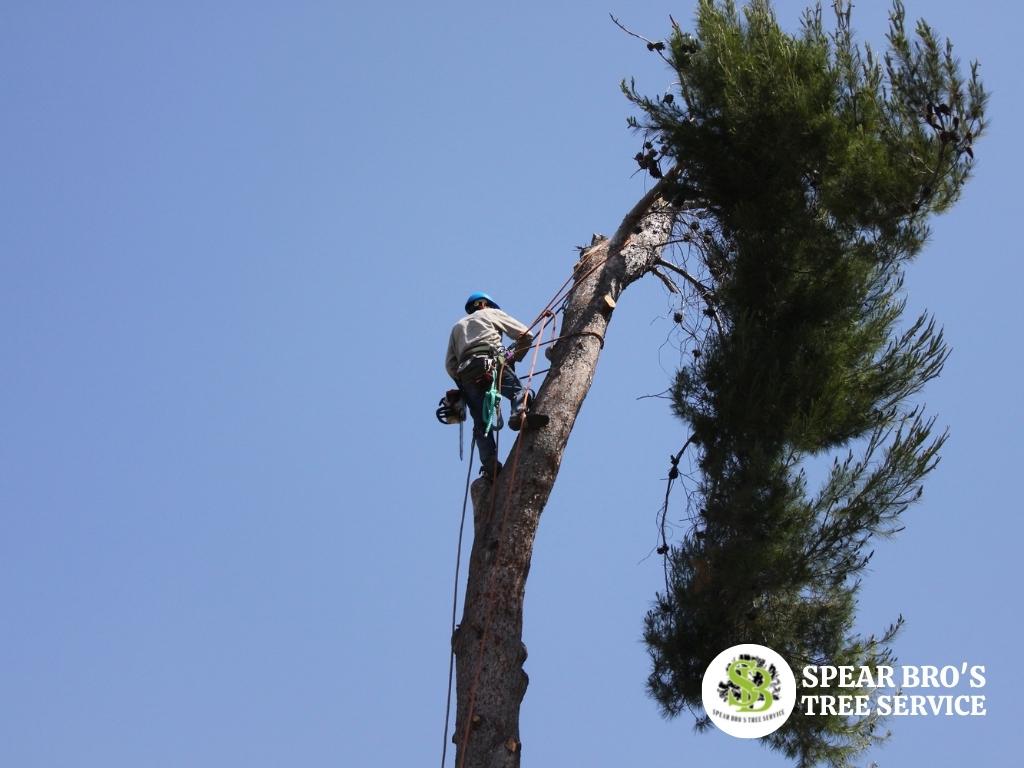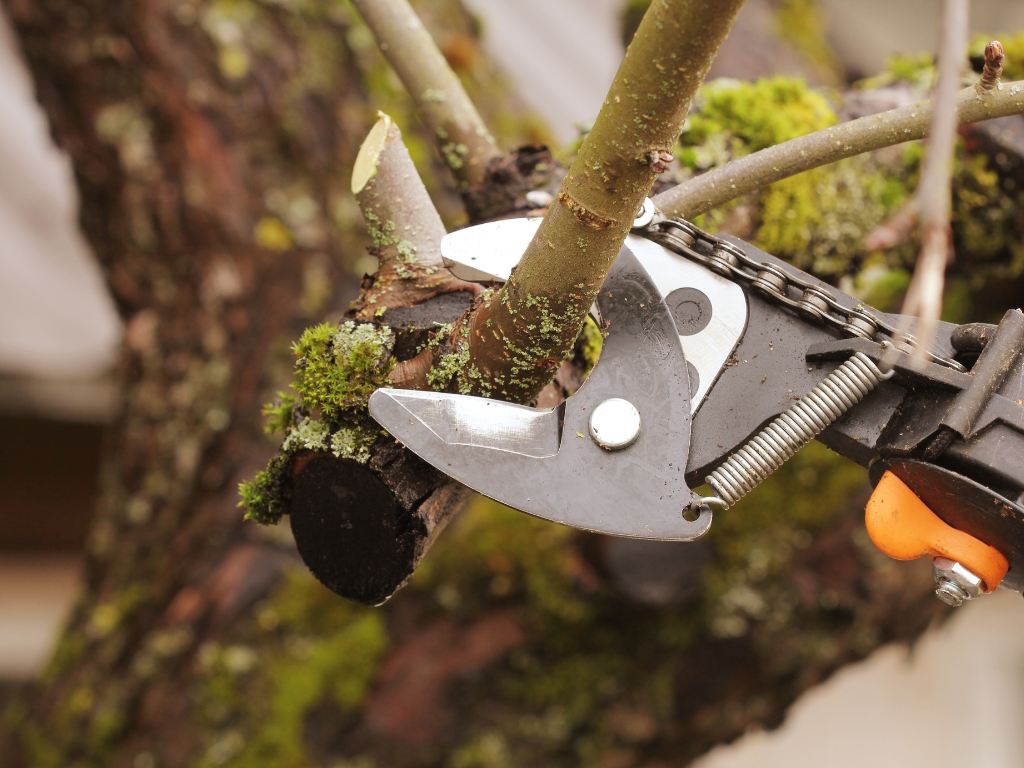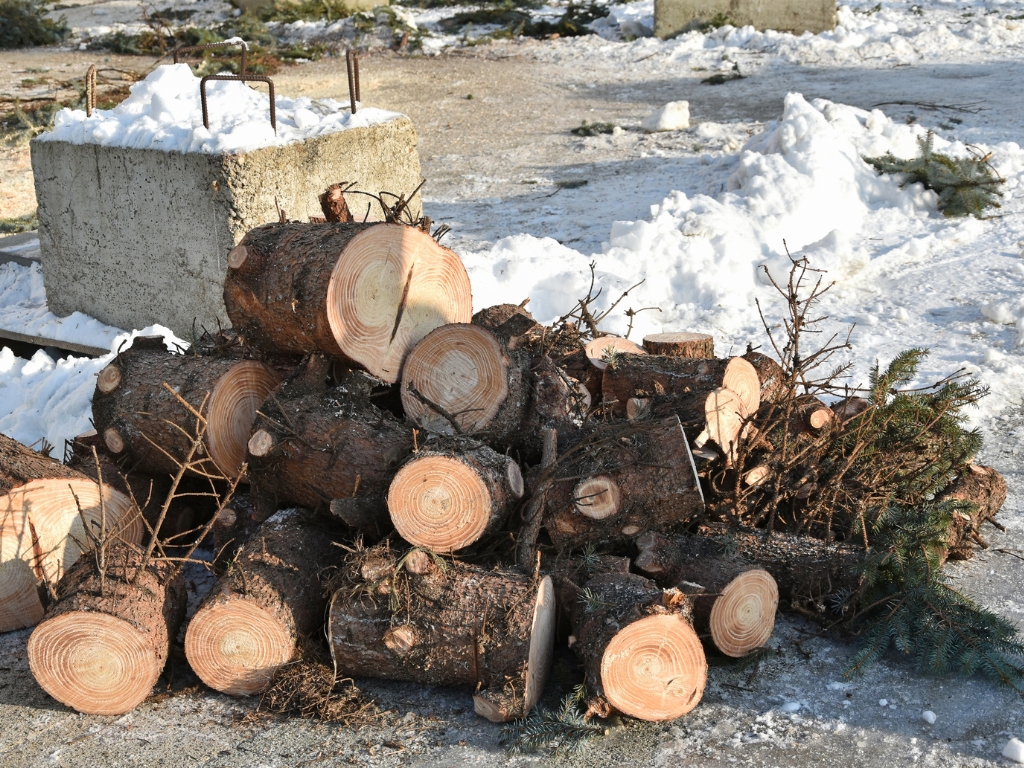Trees are remarkable natural resources that beautify homes, clean the air, and improve the quality of life. However, like any other living organism, they require ongoing care and attention to maintain their health and vigor. Understanding how the changing seasons impact your trees’ needs is integral to effective tree care.
Undertaking seasonal tree care not only keeps trees looking their best but also strengthens their defenses against pests, diseases, and extreme weather conditions. Seasonal care also helps prevent problems before they occur, saving homeowners from potential high costs of tree damage repair and removal. A knowledgeable tree service Bristol CT company, like Spear Bro’s Tree Service, can offer invaluable support in this endeavor.
Summer: The Stress Season
In the heat of summer, trees can experience significant stress, necessitating careful management. Summer tree care involves these strategies to help trees cope with the harsh conditions.
-
Pruning
Summer is not traditionally the primary season for pruning, as trees are actively growing during this period. However, minor pruning can be undertaken to remove dead, diseased, or hazardous branches. These problematic branches can pose a risk in stormy summer weather, potentially causing damage to property or people.
When considering pruning during the summer, it is essential to limit it to the necessary removals and not prune excessively as this can cause additional stress to the tree. For larger branches or more complex pruning jobs, it’s advisable to seek professional help to perform the job safely and effectively, without causing unnecessary harm to the tree.
-
Watering
The intense heat of the summer puts trees, particularly young or newly planted ones, under significant stress. In these conditions, maintaining adequate hydration becomes critical. Watering trees properly in summer helps them manage the heat stress and can improve their overall health and vitality.
The best time to water trees during the summer months is in the early morning or late evening. This timing reduces water loss due to evaporation and allows the water to penetrate deeply into the soil, reaching the tree roots more effectively. Deep watering encourages the development of a robust root system that can access deep soil moisture reserves and better withstand dry periods.
-
Mulching
Mulching serves multiple purposes during the summer months. It helps to retain soil moisture, reducing the frequency and amount of watering needed. By covering the soil, mulch also limits evaporation caused by the hot summer sun, ensuring that more water is available for the tree’s roots.
Beyond moisture conservation, mulching provides a barrier against extreme surface soil temperatures, protecting the roots from heat stress. As organic mulch breaks down, it continues to improve soil quality, promoting better water retention and nutrient availability. Therefore, reapplying mulch during the summer months is a straightforward and effective method to support the health of your trees during the stress season.
Autumn: The Preparation Season
Autumn is a time of transition, as trees prepare for the impending winter. The fall season is ideal for various preparatory measures for the colder months ahead.
-
Planting And Transplanting
Autumn, characterized by cooler temperatures and increased rainfall, offers the perfect conditions for planting new trees or transplanting existing ones. This season provides an opportunity for the tree to establish its root system in the new location without the stress of summer heat or the vigorous growth of spring.
Planting or transplanting in the fall allows trees to use the cooler months to establish new roots and adapt to their new environment. By the time winter arrives, the trees are typically well-adjusted and ready to withstand the colder temperatures. They can then burst forth with robust growth when spring arrives, having had a head start during the fall and winter months.
-
Leaf Clean-Up
As autumn progresses, trees begin to shed their leaves—a process known as senescence. While the falling leaves create picturesque landscapes, they can also suffocate lawns if left unattended. A thick layer of leaves can block sunlight and reduce water evaporation, creating damp, shady conditions that can harm your lawn or become a breeding ground for pests.
Regular clean-up of fallen leaves prevents these potential problems. Additionally, these leaves can be a valuable resource for composting. Composting leaves creates nutrient-rich soil that can be used to enrich your garden, providing a natural, cost-effective source of nutrients for your plants. Thus, with a little effort, the fallen leaves of autumn can be turned into a boon for your garden.
-
Preparation For Winter
As autumn winds down, it’s time to start preparing your trees for the upcoming winter. This preparation can involve a number of practices, depending on the types and ages of your trees. Young or thin-barked trees, for example, may require wrapping to protect them from temperature fluctuations and potential animal damage.
Tree wraps can help protect vulnerable trees from winter sunscald, a condition that occurs when daytime sun heats the tree bark followed by freezing nighttime temperatures, causing the bark to crack. It also prevents damage from animals, such as deer or rodents, that may chew on the bark.
Other preparation may include final pruning of dead or damaged branches, mulching to protect roots from freezing temperatures, and watering until the ground freezes. Such preventative care in late autumn can ensure your trees are well-equipped to weather the winter months.
Winter: The Dormant Season
When winter sets in, trees enter a period of dormancy, akin to a deep sleep. This season is a prime time for specific tree care tasks like the following.
-
Dormant Pruning
As temperatures drop and trees shed their leaves, they enter a state of dormancy, akin to animals hibernating. This slowdown in growth and metabolic activity makes winter an excellent time for pruning. Pruning during this period results in less stress for the tree as the wounds heal before the new growth starts in spring.
In addition, the absence of leaves provides a clearer view of the tree’s structure, allowing for more effective pruning. It becomes easier to identify diseased or damaged branches that need removal. It also offers the ability to shape the tree correctly, promoting healthy growth and reducing the potential for storm damage. Therefore, winter is an ideal time to undertake pruning, provided the weather is not too severe.
-
Tree Inspection
The dormant season also makes it easier for tree professionals to inspect the overall health and structure of the trees. Snow and ice can exacerbate any existing issues, making branches brittle and susceptible to breaking. These falling branches pose potential safety risks and can cause damage to nearby property.
By conducting tree inspections during winter, homeowners can detect problems early, such as cracks, diseases, or pest infestations. Tree service Bristol CT companies have the expertise to spot these issues and suggest necessary corrective measures. They can assess the risk of branch failure and guide homeowners on appropriate actions, from cabling and bracing to removal of the hazardous branches.
-
Mulching
Mulching is another crucial winter tree care activity. It involves applying organic materials such as wood chips, compost, or leaves around the base of the tree. This practice helps to insulate the soil, maintaining a more stable temperature around the roots.
Fluctuating temperatures and freeze-thaw cycles can lead to soil erosion and root damage. By regulating soil temperature and reducing moisture loss, mulching protects the roots from these harsh conditions. Additionally, as the mulch decomposes, it provides essential nutrients to the tree, promoting overall health and vitality. So, while trees may appear inactive during winter, homeowners can take proactive steps to ensure they’re well-prepared for the spring growth surge.
Spring: The Growth Season
Springtime marks the awakening of trees from winter dormancy, sparking a burst of new growth. This period calls for essential care steps such as the following.
-
Fertilization
As winter recedes, trees awaken from dormancy and prepare for the vigorous growth of spring. To support this new growth, trees require an additional nutrient boost, which is where fertilization comes in. Fertilizers provide a concentrated source of essential nutrients like nitrogen, phosphorus, and potassium that are crucial for tree growth and development.
Slow-release fertilizers are often preferred for their ability to steadily provide nutrients over a longer period. They replenish nutrient deficits in the soil and ensure a continuous nutrient supply to the trees throughout the growing season. Proper fertilization in the spring not only stimulates robust growth but also strengthens trees’ resilience to pest attacks and diseases.
-
Pest And Disease Control
Spring is a critical period for the initiation and spread of various pests and diseases. Rising temperatures and increased tree activity make it an opportune time for pests to infest and diseases to manifest. Regular inspections during spring are vital to catch early signs of infestations or diseases, which can range from unusual leaf discoloration to noticeable pests on the tree.
Quick detection is paramount to preventing these issues from escalating and causing severe damage. Once detected, homeowners can take appropriate measures to mitigate the problem. The steps can range from using specific pest-control products to consulting with a professional tree care service. An early response can save trees from significant harm and maintain the overall health of the landscape.
-
Hydration
Despite the occasional spring showers, the water provided by nature might not be sufficient for your trees, especially during drier periods. Just like all living organisms, trees need a consistent water supply to thrive. This is particularly important in spring when trees are pushing out new growth and need extra hydration.
Watering should be deep and focused on the root zone to encourage deep root growth, which makes trees more resilient and better able to access water reserves in the soil. Overhead watering can lead to excessive moisture on the leaves, creating an environment conducive to fungal diseases. A well-hydrated tree during spring will be better equipped to handle the heat of the upcoming summer months.
Conclusion
Proper seasonal care is integral to maintaining the health and longevity of your trees. This involves understanding the unique needs of each season. Partnering with a trusted tree service Bristol CT company can make this process easier, ensuring the health and wellbeing of your trees all year round.
Remember, every season brings its unique set of challenges and opportunities; navigating these with care and expertise contributes to a vibrant and healthy tree-scape that enhances the beauty and value of your property.





